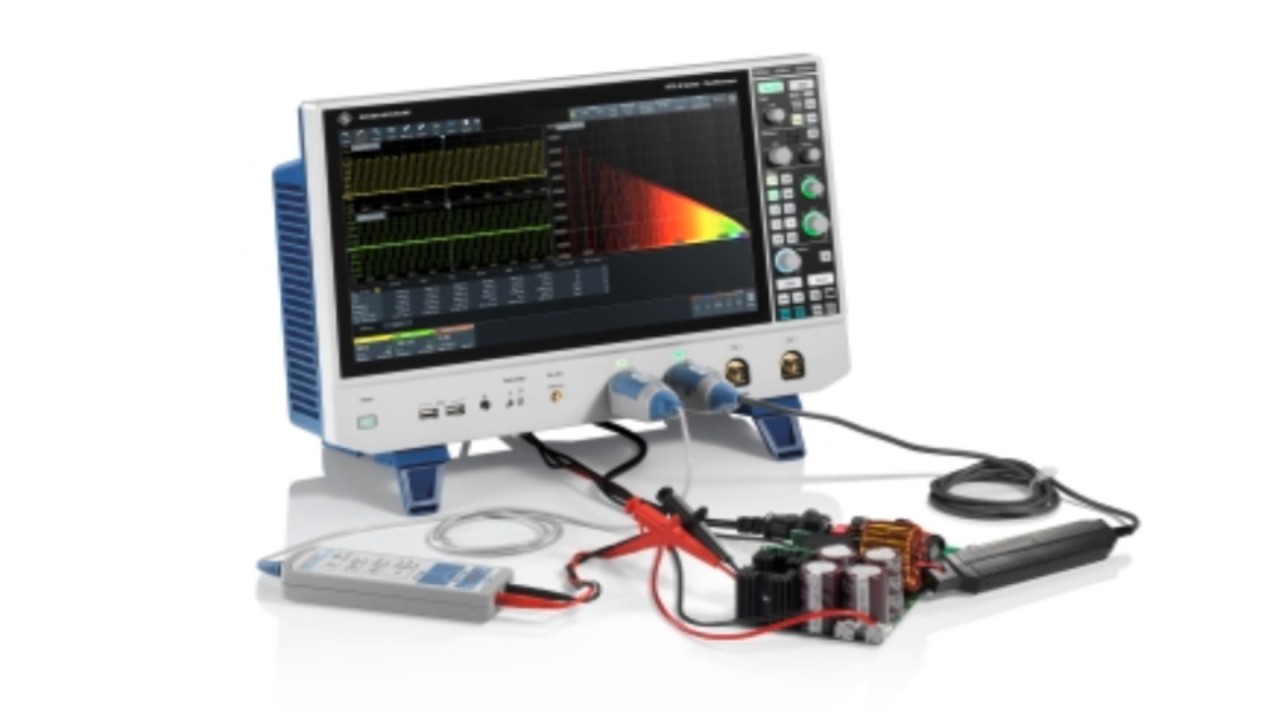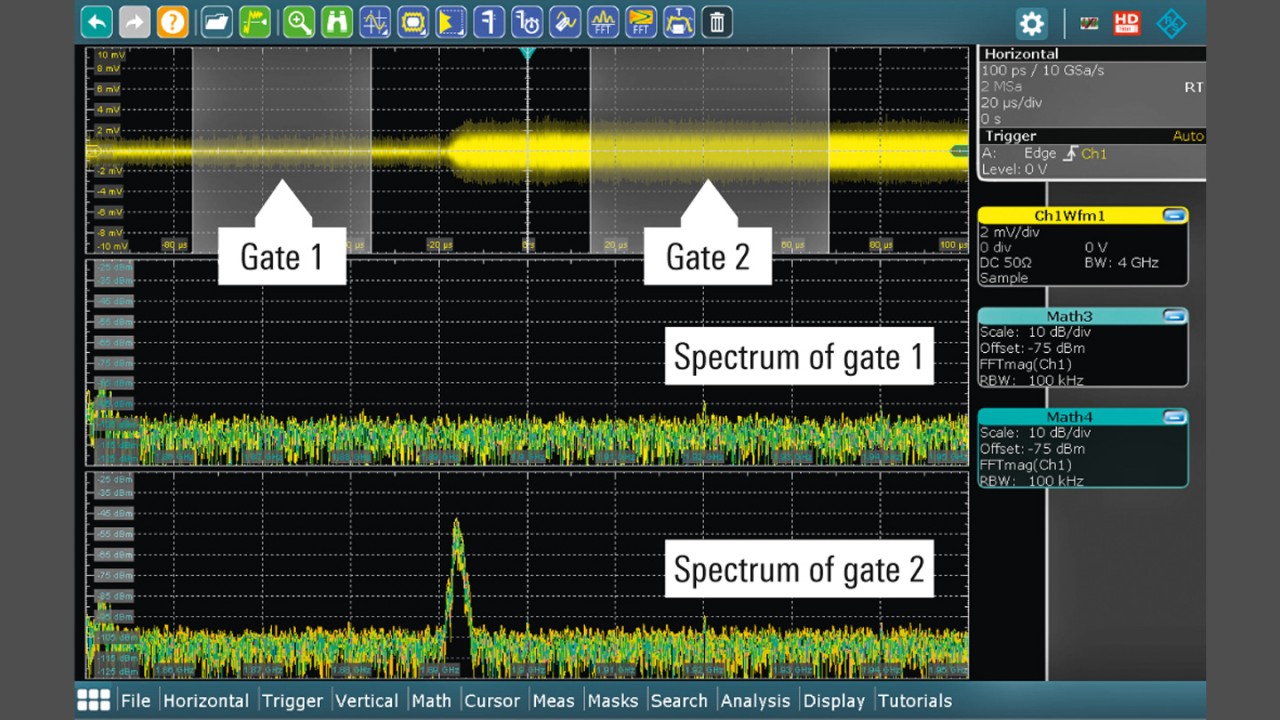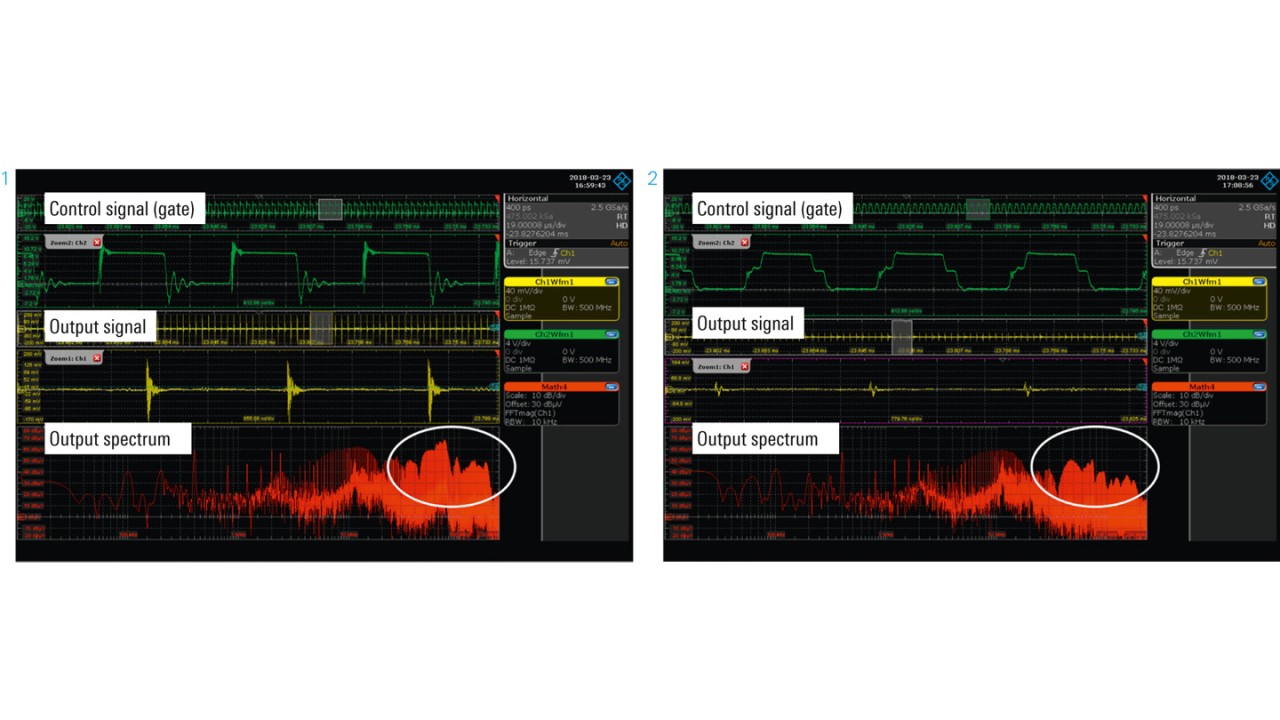Optimizing gate driving voltages with respect to EMI emission
One source of EMI emissions in power electronics circuits is the fast-switching MOSFET bridge. Modifying the gate driving voltage of the switching transistors is a straightforward means of reducing EMI. This requires parallel measurement of the gate driving voltage, the output signal and the emitted radiation, as well as their spectrum.
In the figure below, various drive signals of a MOSFET bridge and their effect on the emitted radiation is analyzed. In (1) a rectangular gate drive signal was applied, whereas in (2) a cascaded two-level rectangular gate drive signal was used (green). Parallel monitoring of the EMI emission with a near-field probe clearly shows that this is an effective method: the amplitude of the high frequency components in the EMI signal (red) is reduced effectively.
The EMI of a MOSFET bridge (red) is significantly reduced by optimizing the gate driving voltage (green). A rectangular gate drive signal was used in (1), while a modified two-level gate drive signal was applied in (2). © IFE Graz University of Technology, Austria










